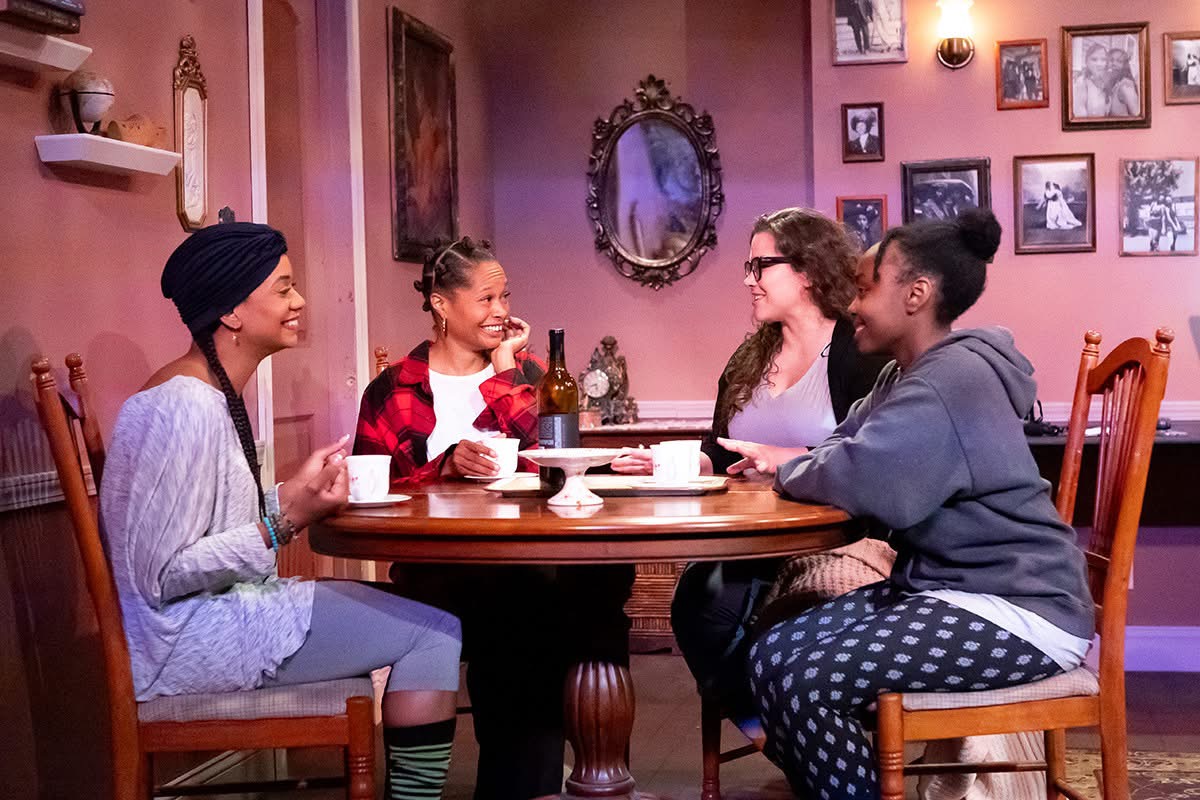Nonprofits are fueled by passion, purpose—and often, exhaustion. In small organizations especially, it can feel like overextending yourself is the only way to meet big community needs with limited resources.
But the truth is: no mission can thrive if the people behind it are burned out.
In this article, three creative-sector nonprofits share how they’re actively pushing back against burnout and building cultures that prioritize rest, care, and sustainability. Their stories offer practical inspiration for finding more balance in your own work.
TBEY Arts Center: Encouraging a Creative Recharge

TBEY Arts Center, Inc. is a nonprofit arts organization based in Milwaukee, Wisconsin whose mission is to strengthen young people through exposure to the arts and through opportunities for creative expression. They serve youth ages 2–19 from diverse and underserved communities by providing professional arts programming in dance, theater, music, and visual arts. Their team includes a small but mighty group of five staff members, supported by a rotating roster of teaching artists.
Like many small organizations, TBEY has faced significant challenges related to staff and volunteer burnout, especially coming out of the pandemic. The emotional labor of serving youth, balancing administrative duties, and responding to growing community needs took a toll on their team’s energy, morale, and mental health. They realized they needed intentional strategies to prevent burnout and support sustainable work habits.
Their response took a multi-layered approach:
- They created a culture of open communication where team members could talk openly about stress, boundaries, and capacity without judgment.
- They implemented “wellness days” to allow staff to take proactive mental health breaks.
- They shortened meeting times, prioritized clarity in assignments, and encouraged slowing down when needed.
- They introduced bi-weekly “Creative Recharge” sessions—simple, low-pressure art-making activities just for staff to reconnect with creativity without any expectations of productivity.
These efforts were largely staff-driven, with leadership fully supporting the shift toward a more balanced, supportive environment.
Although they have only been implementing these practices for a few months, the impact is already showing: team morale is up, staff feel more comfortable asking for support, and the “Creative Recharge” sessions have even sparked ideas for future programming. While it’s still early, the positive energy feels contagious, and they’re excited to keep building on this foundation.
TBEY’s advice for others?
“Don’t wait until burnout shows up in obvious ways, address it proactively. Create space for open conversations about mental health, encourage rest, and build small moments of creativity or community into your organization’s regular rhythm. You don’t need a big budget; it’s about intentionality. If we could do it over again, we would have started these practices much sooner.
At TBEY, we believe that creative expression is healing, and that includes the people delivering the work, not just those we serve. Investing in your team’s well-being isn’t a luxury; it’s critical to sustaining your mission. After all, you can’t pour from an empty cup!”
Fonseca Theatre Company: Putting Staff First

Located in the Near West neighborhood of Indianapolis, Fonseca Theatre Company serves artists of color and neighborhood residents. Their mission is to create a space where artists, educators, and audiences come together to exchange powerful stories and ideas. With a team of three full-time and three part-time staff, they produce thought-provoking theater that’s deeply responsive to the needs of their city and community.
Like many organizations, their biggest challenges are financial. Many of their staff members take on outside work to meet their living expenses, which keeps their schedules packed nearly every day of the week. Production budgets limit their ability to offer competitive pay for actors and designers, and they are also working to pay down outstanding loans.
Still, leadership remains committed to putting staff first. They encourage time off and seek to cultivate a culture where staff can ask for support. There are no restrictions on PTO. Acknowledging their staffs’ outside work schedules, they’ve shifted staff meetings to Sunday mornings, a time that works for everyone.
Since implementing these changes, both attendance and communication have improved. With a chance to get everyone together at the same time, the team feels more cohesive. Staff are given more time to share their ideas, which they’ve approached with increased excitement – and their ideas are regularly implemented into programming.
Now, as they approach next year’s budgeting process, Fonseca is preparing to completely restructure their budget to increase salaries and wages.. They’re inviting staff into the budgeting process and are giving part-time staff promotions to be able to focus more on their work with Fonseca. They recognize the value in putting staff first – and acknowledging the financial value of their time.
Fonseca’s advice for others?
“Really make time and space for as much communication and transparency as possible and prioritize paying your team for that extra time. Your team will be more engaged and that will lead to growth for them and the organization, which will ultimately make other operating expenses less overwhelming.
Don’t let the current climate overwhelm you. It just makes the mission more important and is bringing the focus back to where it should be – the people.”
Sixty Inches From Center: Embracing the Art of Slowing Down

Sixty Inches From Center has been producing collaborative projects and artists, archival practice, art history, and culture in Chicago and the broader Midwest region since 2010. As a non-hierarchical, worker-led organization and publishing platform, their team works together to bridge culture, cultural preservation, and artist networks within the Midwest. They focus widely on the arts and culture of the Midwest, and place a deep emphasis on Indigenous, diasporic, queer, and disability communities within the region.
Their team is a mix of employees and contractors, many of whom are practicing artists. Sixty prioritizes flexibility in their work: rather than clocking in and out, team members work on a task-based model and set their own schedules.
But as a busy media organization, taking true breaks became a challenge. After time away, they’d be returning to an overwhelming amount of work waiting for them. The timing of the winter holidays with the end of their fiscal year meant that emails would pile up and it was even harder to catch up. And for a team of creatives, it was hard to take a break to return to their own creative ideas.
Their solution: scheduled “slowdowns” where the Sixty team collectively hit pause on work. Each year, from December 1-January 31 and from Juneteenth through the Monday after the Fourth of July, they step away from their work, and don’t accept any new partnership proposals or pitch ideas. And because everyone is taking time off at the same time, internal emails decrease, and work for their collaborators reduces.
Since implementing slowdowns, Sixty has been able to examine their previously self-imposed urgency on their work, and reevaluate what truly needs to happen—and when. They found some things weren’t so important to put them ahead of their own wellbeing. The planned pauses have also helped them to reimagine the rhythm of their year and the way they design projects, creating more space for thoughtful, sustainable work.
Sixty’s advice for others?
“The work we’re doing is so important, but it is not more important than our lives and health as humans. Our health is our wealth. We have to take care of each other. And if we really dig into what our missions are, no matter what kind of organization you are, especially if you’re in the arts, work blooms and happens in the space of rest.
Nothing good comes from burnout. Our best ideas don’t come from burnout. Our ability to serve our communities doesn’t come from burnout. It’s urgent and essential that we figure out tools and ways to address this head on, and to not let the teachings of these systems lead us to believe that we can’t pause.”
What We’re Learning
Across these three organizations, a few key takeaways rise to the surface:
- Acknowledge the emotional labor. Mission-driven work often involves deep personal investment and emotional intensity. That means the work can also weigh heavily on workers. Naming that labor is the first step toward addressing burnout.
- Build in flexibility. Flexible time off and work hours help employees balance the other things they have going on in their lives.
- Pay people well. Recognizing the value of your staff in a financial way shows that their work is valued at every level.
- Make space for collective rest. Whether it’s a winter break, summer slowdown, or simply fewer meetings, intentional pauses can help your whole organization reset and reconnect.
Burnout doesn’t have to be a given in nonprofit work. With intentional practices and a culture of care, small organizations can create environments where mission-driven work and well-being go hand in hand.
